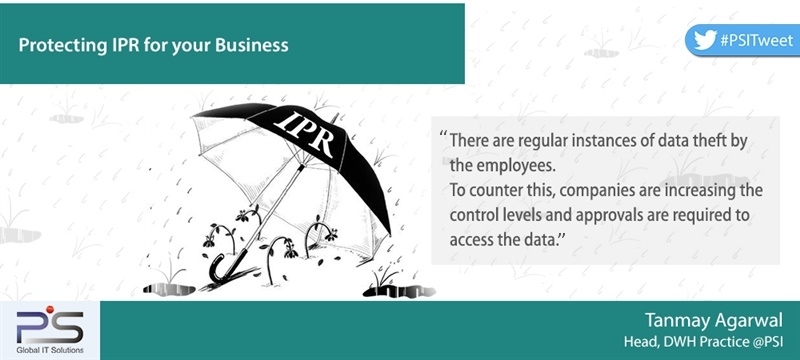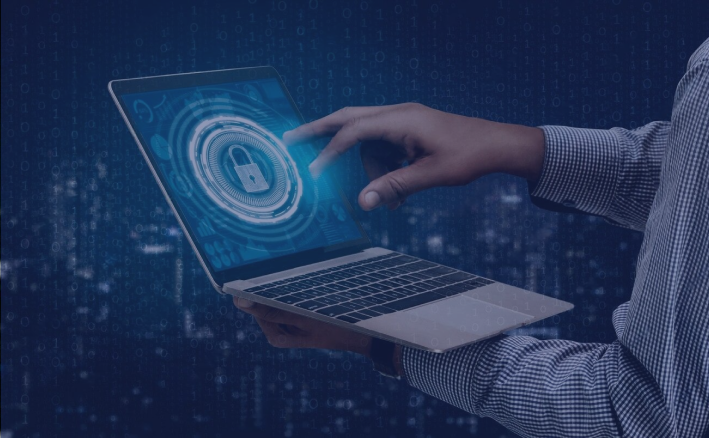
We all are familiar with Intellectual property rights, the legal rights assigned to any person or group for their intellect creation. The World Intellectual Property Organization reports an estimate of about 36% growth (YOY basis) in the number of IPR applications. The digital economy has shifted the focus from physical assets to intangible technology. Few years back, business organisations had massive infrastructure and a large workforce. However, now the virtual world has resulted in virtual organisations and increase in the number of patents, registered trademarks & designs, etc. The shift has significantly tilted towards intangible intellectual property aspects.
IP refers to new ideas, original expressions, distinctive names and images, which are unique and valuable for the products. Any incident of leakage of the information can drastically impact the business, its reputation, market position and even liable regulatory actions. There are regular instances of data theft by the employees. To counter this, companies are increasing the control levels and approvals are required to access the data. However, this affects the efficiency. A better option could be to have a strong vigilance level to identify any improper action and respond quickly.
IP access can be channelized through following modes:
- Physical Access: Enormous data is kept in loose paper sheets for reference, unattended storage media, unlocked computers, etc. The data related to entry in secure areas, employee presence at premises all have to be collated to analyse for suspicious activity.
- Data loss through email: Emails are an easy source for outflow of sensitive information.
- Corporate knowledge repositories: The critical data w.r.t. customer details, pricing, product architecture, etc. are stored on the intranets. If these repositories are accessible over the internet without security parameters like secured socket layers, they may pose a serious threat for the organisation.
So, the final call is to handle large volumes of data and apply vigilance to detect abnormal patterns. The best procedures, a company should apply to protect its intellectual property are:
- Legally binding agreements with employees and vendors for the code of conduct and confidentiality.
- Network security using firewalls to prevent infiltration by the hackers and other outside threats. If networks are accessed outside the intranets, then secured VPNs and SSLs should be implemented.
- Compartmentalised storage of confidential information, which can be accessed on need basis. In addition, proper multiple back-ups should be taken on a regular frequencies.
- Compliance to the international security management systems like IEC/ISO 27001, PSI DCC, etc. may be adhered and conducting periodic information security audits.
- Revoke a departing employee’s ability to access any proprietary information and abide him legally not to disclose proprietary information.
We all are familiar with Intellectual property rights, the legal rights assigned to any person or group for their intellect creation. The World Intellectual Property Organization reports an estimate of about 36% growth (YOY basis) in the number of IPR applications. The digital economy has shifted the focus from physical assets to intangible technology. Few years back, business organisations had massive infrastructure and a large workforce. However, now the virtual world has resulted in virtual organisations and increase in the number of patents, registered trademarks & designs, etc. The shift has significantly tilted towards intangible intellectual property aspects.
IP refers to new ideas, original expressions, distinctive names and images, which are unique and valuable for the products. Any incident of leakage of the information can drastically impact the business, its reputation, market position and even liable regulatory actions. There are regular instances of data theft by the employees. To counter this, companies are increasing the control levels and approvals are required to access the data. However, this affects the efficiency. A better option could be to have a strong vigilance level to identify any improper action and respond quickly.
IP access can be channelized through following modes:
- Physical Access: Enormous data is kept in loose paper sheets for reference, unattended storage media, unlocked computers, etc. The
data related to entry in secure areas, employee presence at
premises all have to be collated to analyse for suspicious
activity. - Data loss through email: Emails are an easy source for outflow of sensitive information.
- Corporate knowledge repositories: The critical data w.r.t. customer details, pricing, product architecture, etc. are stored on the intranets. If these repositories are accessible over the internet without security parameters like secured socket layers, they may pose a serious threat for the organisation.
So, the final call is to handle large volumes of data and apply vigilance to detect abnormal patterns. The best procedures, a company should apply to protect its intellectual property are:
- Legally binding agreements with employees and vendors for the code of conduct and confidentiality.
- Network security using firewalls to prevent infiltration by the hackers and other outside threats. If networks are accessed outside the intranets, then secured VPNs and SSLs should be implemented.
- Compartmentalised storage of confidential information, which can be accessed on need basis. In addition, proper multiple back-ups should be taken on a regular frequencies.
- Compliance to the international security management systems like IEC/ISO 27001, PSI DCC, etc. may be adhered and conducting periodic information security audits.
- Revoke a departing employee’s ability to access any proprietary information and abide him legally not to disclose proprietary information.
[:]








